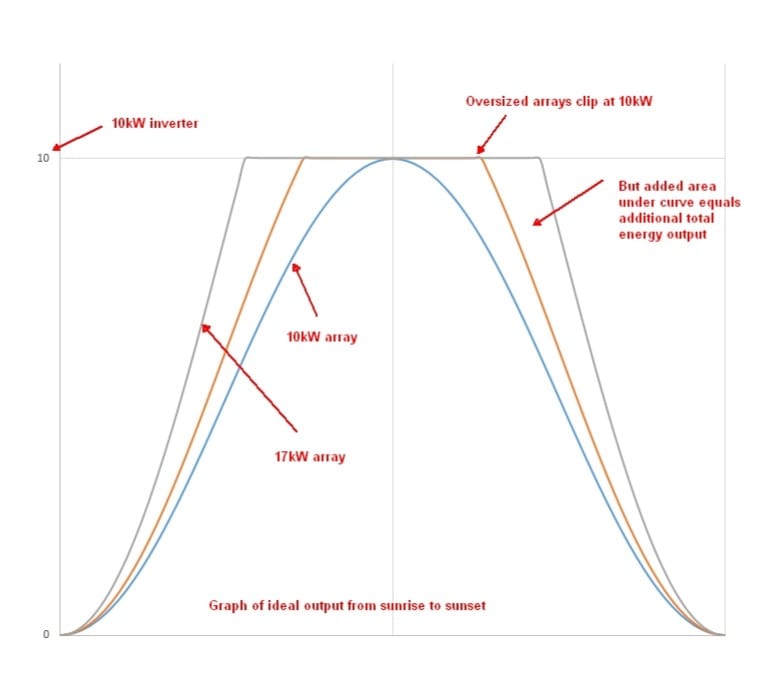Array Oversize
Array oversize applies to any solar electric system, but is most commonly a topic in design of grid tie batteryless systems.
Good solar design practice will have a solar array that is rated larger (in Watts or kiloWatts) than the inverter (or charge controller) it’s feeding. This is called ‘oversize’ and is expressed as a percent of the inverter size.
For example: a 12kW array connected to a 10kW inverter is oversized by 20%.
Oversize typically ranges from 15% to 35%, but oversize up to 100% is becoming more common.
Some inverter manufacturers have identified this as a concern and are limiting the maximum oversize on their inverters. 50% is a common maximum.
Benefits of Oversize
The main benefit of oversizing is getting more energy from a limited inverter size. There are a number of reasons why an inverter would be the bottle neck in system size and maximum energy generated in that scenario will come from an inverter that is maximally oversized.
Costs of Oversize
As the oversize increases the marginal benefit decreases and overall system efficiency goes down. So while total kWh generated goes up, cost per kWh generated also goes up.
Inverter manufacturers have begun specifying a maximum oversize amount. Exceeding this number can put the inverter warranty at risk.
What to do?
There are a number of factors that feed into a good system design and oversize is part of the design. Contact Generation Solar to discuss how to maximize the benefit from your system.

